About the Talk
Ray Wells of the U.S. Geological Survey presented a lecture on the Revoluntary Tectonics in the Pacific Northwest.
Rotational History of the Pacific Northwest
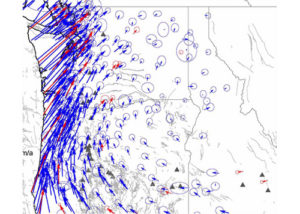 Crustal deformation and paleomag-netic rotations over the past 50 million years indicate that the Cascadia forearc is moving northward along the west coast and breaking up into large rotating blocks. Deformation occurs mostly around the margins of a large, relatively non-seismic Oregon coastal block composed of thick oceanic crust. This 400 km-long block is moving slowly clockwise with respect to North America about a rotation pole in eastern Oregon, thus increasing convergence along its leading edge near Cape Blanco and creating an extensional volcanic arc on its trailing edge. Northward movement of the block breaks western Washington into smaller, seismically active blocks and compresses them against the Canadian Coast Mountains. Movement of these blocks may be up to 9 mm/yr, sufficient to produce damaging earthquakes in a broad deformation zone along block margins.
Crustal deformation and paleomag-netic rotations over the past 50 million years indicate that the Cascadia forearc is moving northward along the west coast and breaking up into large rotating blocks. Deformation occurs mostly around the margins of a large, relatively non-seismic Oregon coastal block composed of thick oceanic crust. This 400 km-long block is moving slowly clockwise with respect to North America about a rotation pole in eastern Oregon, thus increasing convergence along its leading edge near Cape Blanco and creating an extensional volcanic arc on its trailing edge. Northward movement of the block breaks western Washington into smaller, seismically active blocks and compresses them against the Canadian Coast Mountains. Movement of these blocks may be up to 9 mm/yr, sufficient to produce damaging earthquakes in a broad deformation zone along block margins.
Recent GPS data show that clockwise rotation of Oregon continues today, and rotation rates from GPS studies are similar to older paleomagnetic rates. Northward moving Oregon is currently squeezing Washington against slower moving Canada: this constriction has produced the Yakima fold and thrust belt and its analogs, like the Seattle fault, in the forearc. Locally, right lateral shear in the forearc is apparent in the GPS data, consistent with recently discovered right-lateral faults in the Portland area that may be seismically active. In a broad sense, the smaller, clockwise rotating blocks of the Pacific Northwest appear to be caught like a giant ball bearing between the much larger Pacific and North American plates.
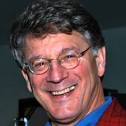 About the Speaker
About the Speaker
Dr. Wells has been a research geologist for almost 30 years, concentrating on the use of field geology, magnetic rock properties (paleomagnetism), and GPS to solve large-scale problems in the Earth’s on-going structural evolution. Ray has produced a simple, hands-on block model of the Pacific Northwest, which he will demonstrate at the talk. Today, 165 of the models are used in classrooms around the Pacific Northwest.
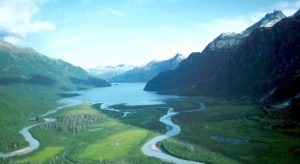
 About the Speaker
About the Speaker
 Crustal deformation and paleomag-netic rotations over the past 50 million years indicate that the Cascadia forearc is moving northward along the west coast and breaking up into large rotating blocks. Deformation occurs mostly around the margins of a large, relatively non-seismic Oregon coastal block composed of thick oceanic crust. This 400 km-long block is moving slowly clockwise with respect to North America about a rotation pole in eastern Oregon, thus increasing convergence along its leading edge near Cape Blanco and creating an extensional volcanic arc on its trailing edge. Northward movement of the block breaks western Washington into smaller, seismically active blocks and compresses them against the Canadian Coast Mountains. Movement of these blocks may be up to 9 mm/yr, sufficient to produce damaging earthquakes in a broad deformation zone along block margins.
Crustal deformation and paleomag-netic rotations over the past 50 million years indicate that the Cascadia forearc is moving northward along the west coast and breaking up into large rotating blocks. Deformation occurs mostly around the margins of a large, relatively non-seismic Oregon coastal block composed of thick oceanic crust. This 400 km-long block is moving slowly clockwise with respect to North America about a rotation pole in eastern Oregon, thus increasing convergence along its leading edge near Cape Blanco and creating an extensional volcanic arc on its trailing edge. Northward movement of the block breaks western Washington into smaller, seismically active blocks and compresses them against the Canadian Coast Mountains. Movement of these blocks may be up to 9 mm/yr, sufficient to produce damaging earthquakes in a broad deformation zone along block margins. About the Speaker
About the Speaker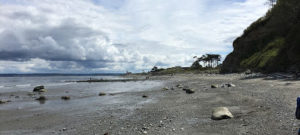
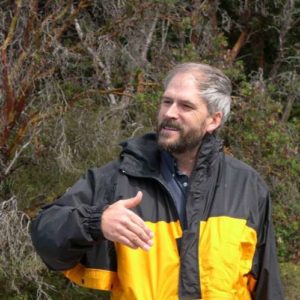 About the Speaker
About the Speaker